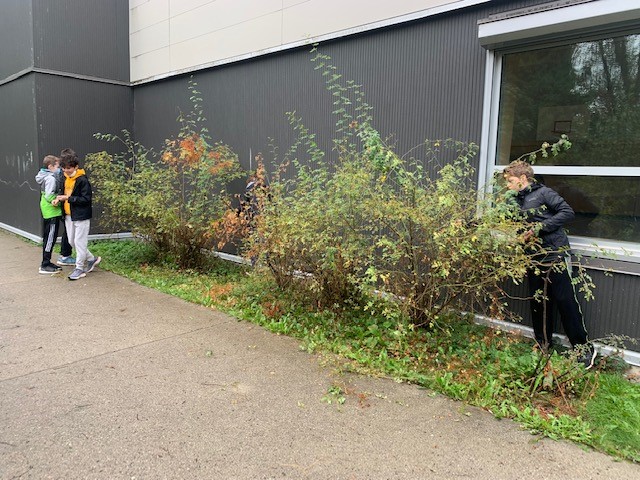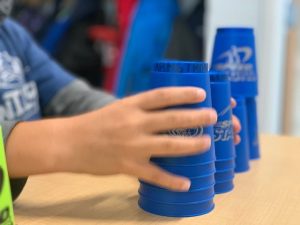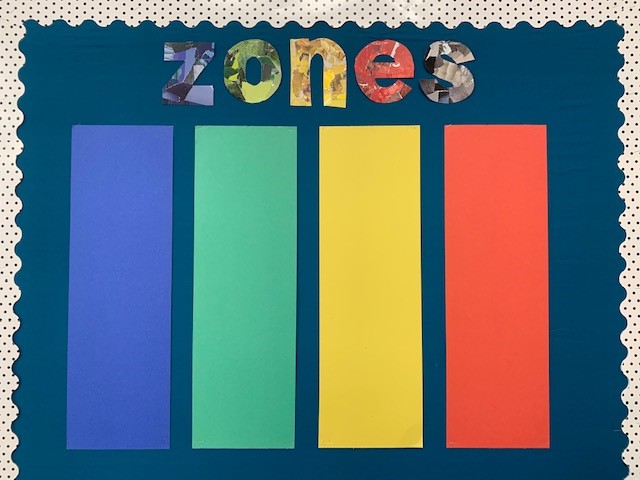If you’re going out tonight: be sure to make safe and respectful choices, and have fun! See you tomorrow! 🎃🦇👻

If you’re going out tonight: be sure to make safe and respectful choices, and have fun! See you tomorrow! 🎃🦇👻

Today we watched a video of Yoann Bourgeois, a French aerobatic dancer, performing his piece entitled Success Isn’t Linear. As he ascends the staircase, he repeatedly falls off, bouncing off a trampoline, and alighting again on the staircase. We can see him reaching as he climbs, and despite multiple falls, he continues working his way to the top. In addition to the carefully choreographed movements, how does the music add to the overall feeling of the piece?
In what ways does this concept of Success Isn’t Linear relate to the First Peoples’ Learning Principle that “learning takes patience and time?”
Yesterday Division 3 had our first Roots2Grow session of the year. We helped prune back plants and bushes, picked oregano, harvested corn, and planted garlic. We also got to take home some dried oregano and lavender from our school garden.
 |
 |
 |
While we were harvesting, we noticed that the rose hips were out and ready to be picked and so we harvested some. Indigenous communities have long used rose hips to stay healthy through the winter months. Rose hips are packed with vitamin C (good for your immune system), vitamin A (for cardiovascular health), and zinc (also for immunity). They are also a source of calcium, magnesium, and iron which benefit our cardiovascular and bone health.

Today we used the rose hips to make a tea with freshly gathered mint, and honey. Have a look in the forest around you–you can make your own tea at home, too! Some people add lemon juice or ginger to their rose hip tea as well. Our rose hip tea was quite weak as we were trying to make a big batch with a limited supply of rose hips.
Division 3–what did you think of your first experience with rose hip tea? Will you try making it again? What will you add to your version?
In our Zones discussions, we talked about how our feelings about a problem can affect our perception of the situation. Sometimes our emotions can feel so “big” that they limit us from seeing possible solutions. Frustration, anger, and despair can block us from moving forward.
Check out this video of two people with a problem. Is the problem as big as they perceive it to be?
Division 3 — What are some strategies you use to control your emotions so you are better equipped for facing a problem?
Division 3 has been Speed Stacking over the past few weeks. It is a relatively new sport that is based on… that’s right… stacking cups!

Sport stacking, also known as cup stacking or speed stacking, is an individual and team sport that involves stacking 9 or 12 (usually 12) specially designed cups in pre-determined sequences as fast as possible. The cups are specially designed to allow for speedier times, so the sport doesn’t work so well with regular cups. People of all ages and from all over the world compete in sport stacking.
Just as with any sport, there are particular rules that guide speed stacking. Division 3 has been learning these rules, and developing their muscle memory by learning the Competition Cycle (3-6-3, 6-6, 1-10-1). One of the rules of cup stacking is that the player must use alternating hands in order to set up each cycle of cups–this action of alternating hands actually strengthen the right and left brain connection. There are also competition events such as partner stacking where each person performs the actions of either the right or the left hand.
Division 3 has been really focused on learning the cycle carefully to avoid fumbles and falls. Once students are familiar and fluent with the cycle, they will be developing their speed! It’s important to start with the fundamentals of a sport before adding in speed and power.
This school year, every class at University Highlands will be participating in the Zones of Regulation curriculum (or just “Zones” for short). Students will be engaging in a variety of activities that are aimed at helping them gain skills in the area of self-regulation.
Self-regulation can go by many names, such as self-control, self-management, and impulse control. It is defined as the best state of alertness of both the body and emotions for the specific situation. For example, when a students plays on the playground or in a competitive game, it is beneficial to have a higher state of alertness. However, that same state could be a challenge in the library. The lessons and learning activities are designed to help students recognize when they are in the different Zones as well as learn how to use different strategies to change or stay in the Zone they are in. The four Zones are categorized by colour, and arranged from a state or lower alertness to highest alertness:
Blue, Green, Yellow, Red.

In addition to addressing self-regulation, students will gain an increased vocabulary of emotional terms, skills in reading other peoples’ expressions, perspective about how others see and react to their behaviour, insight into events that trigger their behaviour, calming and alerting strategies, and problem-solving skills.
A critical aspect of this curriculum is that all team members know and understand the Zones language. This creates a comfortable and supportive environment for the student to practice their self-regulation skills. It also helps the student learn the skills more quickly and be more likely to apply them in many situations. You can support during this learning process by:
It is important to note that everyone experiences all of the Zones–the Red and Yellow Zones are not the “bad” or “naughty” Zones. All of the Zones are expected at one time or another. The Zones of Regulation is intended to be neutral and not communicate judgement.
© 2024 Ms. Coutts' Class
Theme by Anders Noren — Up ↑